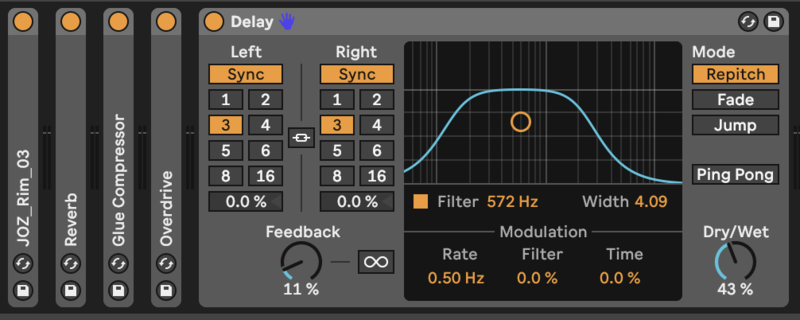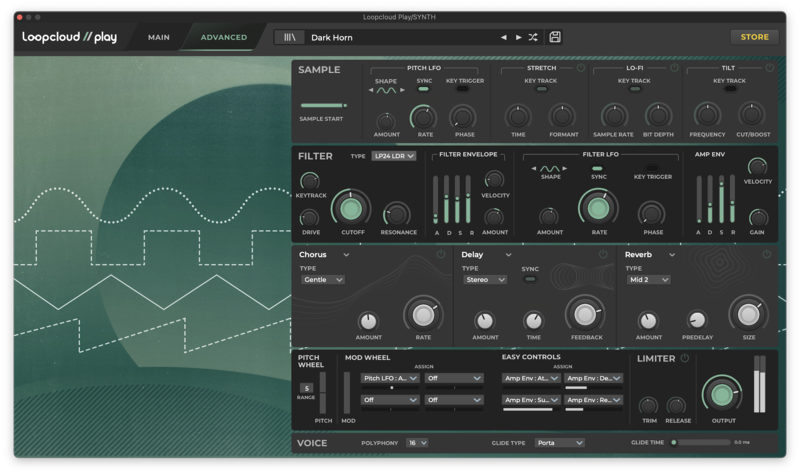Blog
Unpacked: The Chemical Brothers 'Hey Boy Hey Girl' - Recreated with Loopcloud
6 Jun '2024
We examine this Big Beat banger, and how you can remake it yourself using only Loopcloud

Having been active since the late 80s, the electronic music duo The Chemical Brothers are responsible for some of the most well-known and respected electronic music of the last forty years. Despite being firmly engrained in the dance music world, many of The Chemical Brothers’ biggest tracks have achieved varying degrees of commercial success.
One such track is Hey Boy Hey Girl, which was released in 1999 as part of their album entitled Surrender. Hey Boy Hey Girl sits firmly within the Big Beat genre, a style of music The Chemical Brothers are commonly cited as having pioneered over the years. In this article, we’re not only going to dissect Hey Boy Hey Girl, we’re going to use Loopmasters samples and Looploud to recreate the track ourselves.
Track History
Hey Boy Hey Girl was the lead single from The Chemical Brothers’ third studio album, Surrender. It entered the UK charts at number three and remained in the charts for a further nine weeks. It also achieved relative success around the country and in 2011, was even awarded 50th place in NME’s "150 Best Tracks of the Past 15 Years".
Hey Boy Hey Girl contains a sample from the introduction of The Roof Is on Fire by Rock Master Scott & the Dynamic Three. Most notably the vocal hook, as well as the accompanying kick from the same section.
The track seemingly takes more influence from Rave music than many other tracks from the album Surrender, which featured guest vocals from the likes of Noel Gallagher and Bernard Sumner. Helped along by the popularity of Hey Boy Hey Girl, Surrender was the duo’s second number-one album, and went double platinum in 2005. Below is our final Loopcloud version.
Breaking down Hey Boy Hey Girl
Let’s delve deeper into how the Big Beat torchbearers created Hey Boy Hey Girl.
The sample
It’s no coincidence that the most memorable part of the track is also the first part of the track. This instantly recognisable vocal sample is lifted from the introduction of Rock Master Scott & the Dynamic Three’s The Roof Is on Fire. Using the sample early on is a great way to capture listeners’ attention, and represents The Chemical Brothers’ abilities to combine skilful songwriting with electronic music.
The “Here We Go!” line of the vocal sample is scattered throughout the track, and is used to signify a change in section. While the vocal is the most recognisable element of the sample, the sample includes a kick too. The kick from the original track features in the introduction of Hey Boy Hey Girl, but isn’t used as the drums’ main kick throughout the track.
The Acid-style sequence
Aside from the vocals, the next-most recognisable element from this track is the Acid-influenced arpeggio. Although this resembles the resonant tones of the Roland TB-303, the legendary piece of hardware isn’t something that The Chemical Brothers are known to have used in this track. In classic Acid style, this synth part contributes to much of the low end of the track, as well as some high-frequency information from the notes which are one or two octaves higher.
The drums
In Hey Boy Hey Girl, the drums are clearly inspired quite heavily by House music, and are in the classic 4x4 kick pattern with an open hi-hat on the off beats and a snare on the two and four. There is also a rim shot on the two and four with syncopated ghost notes in a 1/4 beat triplet pattern. Unlike many House tracks, the rim shot is considerably more prominent than the snare.
Other elements
In addition to the Acid-tinged sequence, there’s a dark, brassy synth line that repeats the same eighth notes throughout the choruses. The repetition of this element almost serves as a drone sound and helps to tie in the slightly ominous vibe of the track.
How to build a track like Hey Boy Hey Girl
Using nothing but Ableton Live and Loopcloud, we’ll now create a track that resembles The Chemical Brothers’ Hey Boy Hey Girl. If you want to follow along with this track recreation, you can do so in any DAW, but you’ll need a Loopcloud subscription to access the same high-quality samples and plugins. Alternatively, you can sign up for the free 14-day trial now.

Step 1. Project tempo and key
As an Acid House-influenced track, the tempo of Hey Boy Hey Girl is 127 BPM. The track is in the key of D Major.

Step 2. The drums
As mentioned before, the main kick drum in Hey Boy Hey Girl is separate from the kick sample from The Roof Is on Fire. Instead of the reverb and top-end heavy kick in the sample, a deeper kick is used. We’ve chosen the ZTH_Kick_10 from the Techno Horizont pack, as it contains the right balance of sub-frequency information and texture.
The open hi-hat contains lots of high frequencies, and resembles a pitched up 909 open hi-hat. It also contains some pitch modulation that gives it a sense of movement. To achieve the same kind of sound, we’ve pitched the US_PT_HatOpen_king sample up by six semitones, and layered it with the AXT_OHat_01 sample to give it a bit more sizzle. We’ve also applied some pitch modulation to the second hi-hat to create that feeling of movement.

The snare is extremely tight and snappy, and is very subtle in the mix. We’ve used the AA30_Snare_9 sample, as like the kick sample, it contains the right frequency content for our needs and plenty of texture.
Finally, the rim shot is the JOZ_Rim_03 pitched down by four semitones. While this only plays on the two and four, by adding a 1/3 beat filtered delay, we can get the same syncopated feel as in Hey Boy Hey Girl. We’ve also added a touch of reverb and some overdrive to give the rim shot slightly more character.

There’s also a crash cymbal used to signify the start of a new section. It’s a big, bright crash with some time-based effects used to lengthen its tail. In this case, we’re using the ULS_Crash_02 with some reverb and delay to get the right sound. The drums follow a simplistic House-style drum pattern throughout the main sections of the track.

Step 3. The Acid-style sequence
Despite sounding suspiciously like a Roland TB-303, there’s no evidence to suggest that the main Acid-style sequence in Hey Boy Hey Girl was created on one. Having said that, the synth’s uncanny resemblance to the 80s rave machine means that we can find similar sounds using the 303 Audio Filter in Loopcloud.

After selecting the Synths instrument, a 303 tag and the key of D Major, we found 5Pin Media’s Bass Line - The Sequel sample pack. This pack contains over 1300 high-quality synth loops and one-shot samples, many of which akin to the squelchy sounds of the 303. The BLS_D_XoX_Square3_124_P16 sample seemed to match the timbre and notation of the original the most, and with some careful chopping, rearranging and transposing, we were left with a sequence that matches that of in the original.
Step 4. The persistent synth
In addition to the main synth sequence, there’s another repetitive synth sound that repeats a D2 note in a straight eighth note pattern. For this sound, we’re using Loopcloud PLAY as it’s packed with inspiring and unique sounds and tones, ready to be refined within the simple Basic tab or the in-depth Advanced tab.

The Intro II Synths kit contains over 50 high-quality sampled synth instruments for a range of genres and styles. For this sound though, the Dark Horn sample matches the feel and tone of the synth sound in Hey Boy Hey Girl once we roll off some of the high end using the inbuilt 24dB Ladder Filter.
We also introduced some subtle pitch and filter movement using a 1/4 note sinewave LFO, as well as some further movement with the filter envelope.

Step 5. The vocal
For our recreation of Hey Boy Hey Girl, we’re not using the same sample as The Chemical Brothers, but we can find similar sounds in Loopcloud by simply searching for files containing our search terms. To do this, enter your search then select the ‘Files containing’ option.

The ITE_Vox_Here_We_Go_126_1 sample most closely matched the “Here we go!” hook from the original. We just had to slightly tweak the timing of the vocal delivery in order to match the delivery in the original sample and track.

FAQs
Is The Chemical Brothers Rave music?
The Chemical Brothers are credited with pioneering the Big Beat genre of electronic music, and took influence from many other genres of electronic music including Rave, House, Breakbeat and more.
Where was The Chemical Brothers Hey Boy Hey Girl filmed?
The music video for Hey Boy Hey Girl seems to be based in London, as it depicts venues including the Natural History Museum, as well as the Ministry of Sound nightclub.
Did The Chemical Brothers sample The Beatles?
The Beatles’ lawyers once wrote to The Chemical Brothers claiming that they had sampled Tomorrow Never Knows in their track Setting Sun, but The Chemical Brothers’ record label enlisted the help of a musicologist to prove that they hadn’t sampled the song.

